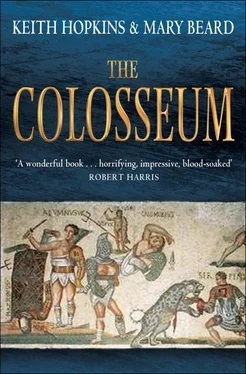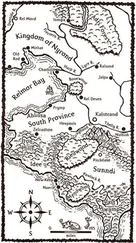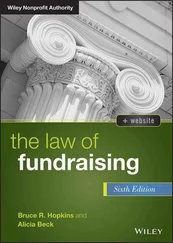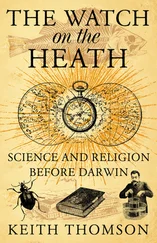Keith Hopkins - The Colosseum
Здесь есть возможность читать онлайн «Keith Hopkins - The Colosseum» весь текст электронной книги совершенно бесплатно (целиком полную версию без сокращений). В некоторых случаях можно слушать аудио, скачать через торрент в формате fb2 и присутствует краткое содержание. Город: London, Год выпуска: 2011, ISBN: 2011, Издательство: Profile Books, Жанр: История, на английском языке. Описание произведения, (предисловие) а так же отзывы посетителей доступны на портале библиотеки ЛибКат.
- Название:The Colosseum
- Автор:
- Издательство:Profile Books
- Жанр:
- Год:2011
- Город:London
- ISBN:9781846684708
- Рейтинг книги:3 / 5. Голосов: 1
-
Избранное:Добавить в избранное
- Отзывы:
-
Ваша оценка:
- 60
- 1
- 2
- 3
- 4
- 5
The Colosseum: краткое содержание, описание и аннотация
Предлагаем к чтению аннотацию, описание, краткое содержание или предисловие (зависит от того, что написал сам автор книги «The Colosseum»). Если вы не нашли необходимую информацию о книге — напишите в комментариях, мы постараемся отыскать её.
The Colosseum — читать онлайн бесплатно полную книгу (весь текст) целиком
Ниже представлен текст книги, разбитый по страницам. Система сохранения места последней прочитанной страницы, позволяет с удобством читать онлайн бесплатно книгу «The Colosseum», без необходимости каждый раз заново искать на чём Вы остановились. Поставьте закладку, и сможете в любой момент перейти на страницу, на которой закончили чтение.
Интервал:
Закладка:
But Romans too could, on occasion, envisage the fearful plight of the arena fighter. In one of those strange rhetorical exercises through which budding Roman orators practised their skills, by arguing different sides of imaginary legal cases, the student was asked to plead on behalf of a rich young man who had been captured by pirates, sold to a gladiatorial troupe and later disinherited by his father. A polished version of this survives (rather like the ‘fair copy’ or crib of a modern school exercise), with a tear-jerking section describing the man’s initiation into the arena:
And so the day arrived. The populace had already gathered for the spectacle of our suffering, and the bodies of the doomed had already been put on display throughout the arena leading a procession that was their own death march. The show’s presenter who was hoping to curry favour with our blood took his seat… One thing made me an object of pity to some of the audience – the fact that I seemed unfairly matched. I was doomed to be the sacrificial victim of the arena; no one did the trainer hold in lower regard. The whole place was humming with the instruments of death. One man was sharpening a sword, another was heating strips of metal in a fire [these were used to check that a gladiator was not faking death]; birch-rods were being brought out from one side, whips from another… The trumpets sounded with the wail that presaged my death, stretchers for the dead were brought on – my funeral procession was being arranged before my death. Everywhere there were wounds, groans and blood; all I could see was danger.
But then, in true rhetorical style, fate intervened. A friend of the young man appeared and bought him out, by offering himself to the trainer instead. That was fiction; reality must often have been more severe.
SOME DEADLY STATISTICS: AN INTERLUDE
Exactly how much more severe? How soon after they entered the arena did most gladiators die? How many lived into honourable retirement? We get very different impressions from the surviving evidence. Some tombstones commemorate exgladiators dying in their beds (or so we guess) at relatively ripe old ages, leaving behind loving wives, grieving children and a clutch of slaves. There is other evidence too that some gladiators were skilled survivors. There are some evocative graffiti from Pompeii which record the results of bouts at various shows, as well as the past ‘form’ of the gladiators concerned. We find an interesting selection of different styles of contest: classy bouts between experienced fighters (a 15-fight man vs a 14-fight man; 16 vs 14 and so on), newcomers pitched against each other; the occasional newcomer versus an old-timer. But what is really surprising (although it may be more boasting) is that a handful of fighters have over fifty contests to their credit. That said, there are are a good number of memorials to gladiators who died young. A man called Glauco, we are told on his tomb, fought seven bouts and died in the eighth, aged 23 years and 5 days. His wife Aurelia and ‘those who loved him’ put the monument up, quoting the dead man’s words: ‘My advice to you is to find your own star. Don’t trust Nemesis [the goddess of Vengeance]. That is how I was deceived.’
This is haphazard information and much of it comes from outside the city of Rome itself (as always, the evidence is skewed towards Pompeii and we can only assume that, writ large, it would apply to the Colosseum too). But if we put together all the evidence from Rome and the rest of Italy about the gladiators’ life-expectancy – tombstones and graffiti – we do get a clearer glimpse into the frequency of gladiators’ fights and their chances of survival into something approaching old age. In fact some expected and unexpected conclusions emerge. The average (median) age at death of gladiators as noted on tombstones was 22.5 years. Of course, gladiators who got such a commemoration were probably an exceptional bunch. They had to have a spouse or a comrade who cared about their deaths sufficiently to set up and inscribe a memorial, which cost cash. In general terms the sample is likely to be biased towards the successful. Even so there is a striking contrast here with the life expectancy of ‘normal’ Roman males. Supposing (and it is only a guess) that gladiators entered the arena around the age of 17; then, on the basis of these figures, they could expect to live just another 5.5 years. Normal males at age 17, on the other hand, had a life-expectancy of 31 years; that is, their average age at death, if they lived to be 17 (a big if: infancy would have killed off most), was 48. Unsurprisingly perhaps, even for these successful gladiators, the chances of dying early was very high.
The tombstone records are revealing in other ways too: we know that Glauco died at 23 after 8 fights; another gladiator died at 27 with 11 fights; another at 34 with 21. These figures suggest either a late age of starting a gladiatorial career, or perhaps more probably – but also more startlingly – a low frequency of fighting, at least among elite gladiators. Assuming a starting age of 17, and assuming also that they were in continual gladiatorial service up to their death, we must reckon something under two fights a year. Were gladiators afraid to fight? More likely, their owners were reluctant to have them risk death. The second-century AD philosopher Epictetus tells us that gladiators belonging to the emperor had been known to complain of not being allowed to fight often enough: ‘they pray to god and pester their overseers to let them fight’. It makes a wry image to think of gladiators strenuously training every day and putting on practice bouts perhaps with wooden weapons – while fights for real were relatively rare. Though not always. In some of the biggest imperial shows (where demand perhaps outstripped the number of gladiators available) we know that individual fighters would sometimes enter the arena more than once. We saw ( p. 51) that this was implied by the ‘half pairs’ noted in the inscriptions commemorating Trajan’s blockbuster in 117. Likewise the man who came to Rome from Alexandria, probably for later shows celebrating Trajan’s success (illustration 10, p. 62), fought at least three bouts in the same series: the inscription explains that after his first bout ever, his second came just seven days later; something then took place ‘at the same games’, but as the text frustratingly breaks off at that point we do not know what that ‘something’ was – perhaps the fight that killed him.
So what were the chances of death in each fight? The figures from Italy are sparse, but suggestive, and again probably biased to the relatively successful. They under-represent the cheap ‘extras’ (gladiators sometimes referred to in Latin as ‘ gregarii ’, the ‘chorus’ or the ‘B-team’), who would surely have been likely to die sooner. One set of graffiti from Pompeii gives information on 23 bouts with 46 fighters: 21 gladiators won outright, 17 were let go without penalty and 8 were killed or died from their wounds. The sample size is ridiculously small, but it is almost all we have and it implies a death rate of about one gladiator in six in each show. This roughly fits with another index of the scale of slaughter. Notwithstanding the occasional veteran with more than fifty fights to his name, if we count up all those living gladiators from Pompeii whose fight record we know, only a quarter had over ten fights’ experience. Three-quarters had died before completing ten fights, implying a cumulative loss of about 13 per cent per fight. Gladiatorial combat, as Gérôme pictured it, with left-over corpses strewing the Colosseum’s arena must have been an expensive rarity. In fact the emperor Augustus had banned the luxury (in Roman terms) of shows in which all fights were to the death. Not that the regulation was universally obeyed: an inscription honouring a man in a small Italian town boasted: ‘over four days he put on 11 pairs, and of these he had 11 of the best gladiators in Campania killed, and also 10 bears cruelly’.
Читать дальшеИнтервал:
Закладка:
Похожие книги на «The Colosseum»
Представляем Вашему вниманию похожие книги на «The Colosseum» списком для выбора. Мы отобрали схожую по названию и смыслу литературу в надежде предоставить читателям больше вариантов отыскать новые, интересные, ещё непрочитанные произведения.
Обсуждение, отзывы о книге «The Colosseum» и просто собственные мнения читателей. Оставьте ваши комментарии, напишите, что Вы думаете о произведении, его смысле или главных героях. Укажите что конкретно понравилось, а что нет, и почему Вы так считаете.












